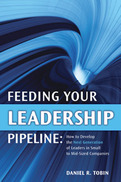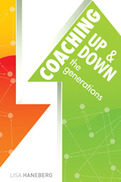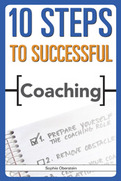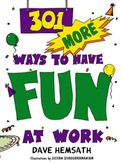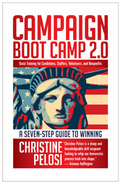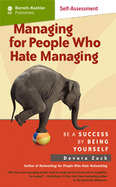-
Offers a complete, concise overview of how each generation -- The Traditionalists, the Boomers, Gen X and Gen Y -- view life, technology, work, communication and behavior
-
Shows that coaching can be more effective if it is a dynamic, interactive process, not a sterile set of practices imposed by a coach on a performer
-
Creates enthusiastic cross-generational communication and relationship-building
"Coaching," Lisa Haneberg says, "is agile, service-oriented persistence with a tolerance for the unexplainable and a willingness to go down a path that is not yours, does not interest you, and requires that you buy new shoes to traverse unharmed." This tongue-in-cheek description suggests the fun and breezy tone of this book. This is most decidedly not just another book about generational differences, nor is it yet another "how to coach" book. Coaching Up and Down the Generations looks at the key processes of transferring knowledge, developing teams, and collaborating, and examines how different age groups can better learn from one another and even experience major breakthroughs that will improve their progress -- despite disparate backgrounds.
You'll find a thorough examination of key issues in inter-generational coaching situations, including what constitutes great coaching, at any age; a complete overview of each generation and how they view life, technology, work, communication, and behavior; how to handle clashing communication styles and preferences; the importance of "coachability" in yourself and others regardless of different habits, opininos, and work styles; how to cultivate a coaching environment where the different generations can have provocative conversations and truly help one another.
With this book as your guide, you can show the generations how to find common points of interest, needs, and goals. You'll find ingenious tips for creating formal and informal coaching situations, developing opportunities to build relationships, and helping people of all ages to become catalytic coaches and engaged performers.
-
Offers a complete, concise overview of how each generation -- The Traditionalists, the Boomers, Gen X and Gen Y -- view life, technology, work, communication and behavior
-
Shows that coaching can be more effective if it is a dynamic, interactive process, not a sterile set of practices imposed by a coach on a performer
-
Creates enthusiastic cross-generational communication and relationship-building
"Coaching," Lisa Haneberg says, "is agile, service-oriented persistence with a tolerance for the unexplainable and a willingness to go down a path that is not yours, does not interest you, and requires that you buy new shoes to traverse unharmed." This tongue-in-cheek description suggests the fun and breezy tone of this book. This is most decidedly not just another book about generational differences, nor is it yet another "how to coach" book. Coaching Up and Down the Generations looks at the key processes of transferring knowledge, developing teams, and collaborating, and examines how different age groups can better learn from one another and even experience major breakthroughs that will improve their progress -- despite disparate backgrounds.
You'll find a thorough examination of key issues in inter-generational coaching situations, including what constitutes great coaching, at any age; a complete overview of each generation and how they view life, technology, work, communication, and behavior; how to handle clashing communication styles and preferences; the importance of "coachability" in yourself and others regardless of different habits, opininos, and work styles; how to cultivate a coaching environment where the different generations can have provocative conversations and truly help one another.
With this book as your guide, you can show the generations how to find common points of interest, needs, and goals. You'll find ingenious tips for creating formal and informal coaching situations, developing opportunities to build relationships, and helping people of all ages to become catalytic coaches and engaged performers.
Offers a simple yet powerful process to help readers take advantage of existing coaching skills and build and hone new coaching skills
Includes a wealth of activities, exercises, pointers, and tips
Shows how taking a coaching approach can enrich all our relationships, on and off the job
Coaching is becoming increasingly popular in organizations today, and with good reason. It is more than providing individuals with enthusiastic support and encouragement. Used correctly, coaching is a powerful tool that will drive performance and support the achievement of career goals. Moreover, coaching delivers benefits to managers and supervisors who master the art of coaching. Relationships with direct reports are strengthened and clarified, and this often translates to increased company loyalty and motivation on the job.
In 10 Steps to Successful Coaching, readers, whatever their level of expertise, will find a simple yet powerful process to embrace and use their existing coaching skills or build and hone new ones. Sophie Oberstein provides readers with a coaching pathway that will lead to greater satisfaction on the job as a manager or employee and even in their personal lives as a friend, spouse, or parent. She offers a solid process that begins with preparation for the role of coach, moves to coming to agreement on goals and outcomes, and ends with ways to ensure that positive changes are internalized and made permanent. While those who supervise and manage others will find this book particularly helpful, the activities, exercises, pointers, and tips are designed so that all readers can become more “coach-like” in their interactions with others. In the end, 10 Steps to Successful Coaching is a book about building a critical business and management skill that a new generation of leaders has increasingly realized is valuable, effective, and key to a high-performing workforce.
Offers a simple yet powerful process to help readers take advantage of existing coaching skills and build and hone new coaching skills
Includes a wealth of activities, exercises, pointers, and tips
Shows how taking a coaching approach can enrich all our relationships, on and off the job
Coaching is becoming increasingly popular in organizations today, and with good reason. It is more than providing individuals with enthusiastic support and encouragement. Used correctly, coaching is a powerful tool that will drive performance and support the achievement of career goals. Moreover, coaching delivers benefits to managers and supervisors who master the art of coaching. Relationships with direct reports are strengthened and clarified, and this often translates to increased company loyalty and motivation on the job.
In 10 Steps to Successful Coaching, readers, whatever their level of expertise, will find a simple yet powerful process to embrace and use their existing coaching skills or build and hone new ones. Sophie Oberstein provides readers with a coaching pathway that will lead to greater satisfaction on the job as a manager or employee and even in their personal lives as a friend, spouse, or parent. She offers a solid process that begins with preparation for the role of coach, moves to coming to agreement on goals and outcomes, and ends with ways to ensure that positive changes are internalized and made permanent. While those who supervise and manage others will find this book particularly helpful, the activities, exercises, pointers, and tips are designed so that all readers can become more œcoach-like in their interactions with others. In the end, 10 Steps to Successful Coaching is a book about building a critical business and management skill that a new generation of leaders has increasingly realized is valuable, effective, and key to a high-performing workforce.
Summary
- Written by the coauthor of the bestselling 301 Ways to Have Fun at Work (more than 50,000 copies sold)
- Accessible information on creating a fun work environment, written for anyone who works in any size or type o
Summary- Written by the coauthor of the bestselling 301 Ways to Have Fun at Work (more than 50,000 copies sold)
- Accessible information on creating a fun work environment, written for anyone who works in any size or type o
Campaign Boot Camp 2.0 is basic training for future leaders who hear a call to service—a voice of conscience that springs from their vision, ideas, and values—and want to translate that call into positive change. Pelosi outlines the seven essential steps to winning: identify your call to service, define your message, know your community, build your leadership teams, raise the money, connect with people, and mobilize to win. Each chapter concludes with a “Get Real” exercise so readers can personalize and integrate these ideas into individual efforts.
In this edition, Pelosi updates the book's “Call to Service” profiles of political leaders and their calls to service; details the expanding role of social media, the Internet, and technology as message multipliers; explores challenges unique to women candidates; and expands on the power of volunteers.
- Detailed, practical advice on how to win any kind of campaign
- Written by a veteran activist with a lifetime of experience running campaigns at every level
- Updated throughout, including new information on using social media, challenges unique to women, and the power of volunteers
My political activism began in the stroller, writes Christine Pelosi. As the daughter of Congresswoman and former House Speaker Nancy Pelosi, Christine is almost literally a born campaigner. She knows politics and policy inside out: shes served as an attorney in the Clinton-Gore administration, on Capitol Hill as a Congressional chief of staff, and as a San Francisco prosecutor. She has conducted boot camps in over thirty states and in three countries, working with dozens of successful candidates for office from city council to US congress. In Campaign Boot Camp 2.0, Pelosi presents leadership lessons from the campaign trail from a diverse array of over forty public figures, lending advice for anyone who wants to run for office, advocate for a cause, or win a public policy issue.
Campaign Boot Camp 2.0 is basic training for future leaders who hear a call to servicea voice of conscience that springs from vision, ideas, and valuesand want to translate that call into positive change. Pelosi offers the seven essential steps to winning: identify your call to service, define your message, know your community, build your leadership teams, raise the money, connect with people, and mobilize to win. Each chapter concludes with a Get Real exercise so readers can personalize and integrate these ideas into individual efforts.
In this edition, Pelosi updates the books Call to Service examplesprofiles of current political leaders and what motivated them to enter public service; details the expanding role of social media, the Internet, and technology as message multipliers; explores challenges unique to women candidates; and expands on the power of volunteers.
Product: Online streamed self-assessment application (not downloaded), limited one-year subscription (5 tests or 12 months, whichever comes first), password controlled
Duration: 20 questions assigning 3 points between each pair of options based on your natural preferences, not learned behavior, rating yourself on Thinker/Feeler management spectrum. The self-assessment takes 10-15 minutes to answer.
Results: The bar graph and score chart shows results compared to others who have taken the test. The results include interpretation from author, next steps, follow-up questions to consider based on scores, author's closing statement, and print option.
BASED ON THE BOOK: You're good at your job and, after years of service and dedication, you finally get that coveted promotion. Congratulations! But there's a catch: instead of spending the majority of your time doing the job you love-a job you're still expected to get done, by the way-you're now also a manager. You weren't trained for this. Nobody prepared you for having to deal with emotions and conflicts and personalities, all while trying to meet ever-greater goals and more pressing deadlines. Not exactly what you had in mind, is it?
Let's face it. It's stressful at the top. But don't worry; it doesn't have to be. Devora Zack knows exactly what you're up against, and she has the tools to help you not only succeed but possibly even enjoy that new management position. As a prominent consultant and coach who speaks to thousands of people annually, Zack is here to yetell you that the only way to maximize your success is by being yourself.
Drawing on the Myers-Briggs Type Indicator, Zack explains that, personality-wise and management-wise, we're either thinkers or feelers. Basically, thinkers lead with their heads and feelers lead with their hearts. Almost nobody's 100 percent thinker or feeler, yet most of us lean one way or the other (and Zack's handy assessment lets you figure out what kind of leader you are). Working with-rather than fighting against-your strengths is key to understanding not only how you make decisions and manage but also how people react to your decisions and respond to you.
Zack takes you through a host of potentially difficult situations, showing how this new way of seeing yourself and others makes managing less of a stumble in the dark and more of a walk in the park. Packed with verve, spunk, wit, and enlightening examples, helpful exercises, and lifesaving tips, Managing for People Who Hate Managing is the new go-to guide for managers looking to love their jobs again.
PURCHASER AND USER NOTE: If you are an individual consumer newly purchasing the assessment, go directly to the shopping cart by clicking the "add to cart" icon to your left. If you are a member of an organization that has purchased a bulk order, or if you already bought the assessment in the last 12 months and are retaking it now using the original Access Key to retake the assessment please log in here. New registrants: Please enter your "Access Key" into the input field to enter the self-assessment for the first time. A note to frequent purchasers: You cannot use your current bkconnection.com password for this product; you must create and use a new password. For any questions, please contact the support desk at 800-929-2929 (8 am-9 pm Eastern U.S. time, Monday through Friday), or [email protected]. Thank you.


